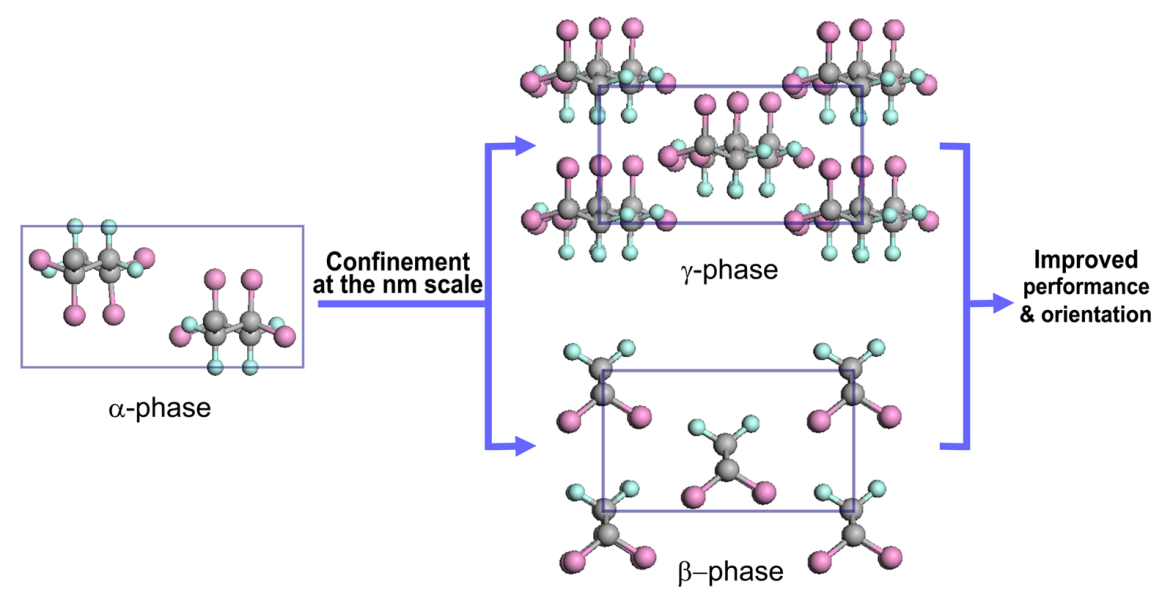Recently, Ferroelectric polymers have received renewed research interest due to their potential application in many new flexible devices. Nanostructured ferroelectric polymer materials, such as nanorods, nanotube, and nanowires, are essential for miniaturization of the relevant electronic components. More importantly, their improved sensitivity and functionality may be used to enhance the performance of existing devices or to develop and design new devices. On the other hand, because of the complicated structural characteristics of the ferroelectric polymers, such as many possible conformation and partial crystallinity, details about the growth mechanisms of their crystals are still far from being fully understood. And the situation is further complicated by the confined dimension of nanostructured polymers.
Based on the methods developed over the last decade for fabricating ferroelectric polymer nanostructures, mainly those of PVDF and P(VDF-TrFE), researchers from the Institute of Acoustics, Chinese Academy of Sciences investigated the nanoconfinement induced structural characteristics and physical property change of the ferroelectric polymers.
Researchers found that nanoconfinement may improve the ferroelectricity or piezoelectric response along the molecular dipole alignment direction (Fig.1). Consequently, in contrast to the normal undesirable side effect in ferroelectric polymer thin films with deteriorated ferroelectricity, confinement effect in polymer nanostructures may be utilized to improve the performance of the relevant devices. Two possible underlying mechanisms were proposed: molecular packing density and counterbalance of the molecular interactions. On the other hand, reduction in dimension may cause significant change in the long and short range ordering of molecular dipoles, which in turn leads to size dependent electrical performance change.

Fig.1 Schematic of phase transition of PVDF/P(VDF-TrFE) under confinement. (Image by GUO)
This research was supported by the National key Basic Research Program of China (973 Program) under Grant No. 2013CB632900, and the National Science Foundation of China under Grant No. 11074277.
The research with the title of “Ferroelectric Polymer Nanostructures: Fabrication, Structural Characteristics and Performance Under Confinement” has been released in Journal of Nanoscience and Nanotechnology (Volume 14, 1 February 2014, Pages 2086–2100).
Corresponding author:
GUO Dong
Institute of Acoustics, Chinese Academy of Sciences, Beijing, 100190, China
Email: dong.guo@mail.ioa.ac.cn


